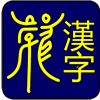Cantonese is spoken by at least 71 million people mainly in the south east of China, particularly in Hong Kong, Macau, Guangdong, Guangxi and Hainan. It is also spoken in Vietnam, Malaysia, Indonesia, Thailand, Singapore, Philippines and among Overseas Chinese communities in many other countries.
In many schools in Hong Kong, Macau and Guangdong, Cantonese is the medium of instruction, though the students are taught to read and write standard Chinese, which they read with Cantonese pronunciation. Cantonese is also the main language of business, the media and government in both Hong Kong and Macau.
Cantonese has appeared in writing since the 17th century. It is used mainly in personal correspondence, diaries, comics, poetry, advertising, popular newspapers, magazines and to some extent in literature. There are two standard ways of written Cantonese: a formal version and a colloquial version. The formal version is quite different from spoken Cantonese but very similiar to Standard Chinese and can be understood by Mandarin speakers without too much difficulty. The colloquial version is much closer to spoken Cantonese and largely unintelligible to Mandarin speakers.
In Hong Kong, colloquial Cantonese is written with a mixture of standard Chinese characters and over a thousand extra characters invented specifically for Cantonese. The extra characters are included in the Hong Kong Supplementary Characters Set (HKSCS).
A selection of characters and words used in colloquial written Cantonese, with Yale romanization, their equivalents in Standard Written Chinese with Cantonese and Mandarin pronunciation, and English translations.

啤啤仔 (bihbījái) is often written BB仔
Many different systems for writing Cantonese with the Latin alphabet have been devised. These include:
The Meyer-Wempe romanisation system was developed by two Catholic missionaries in Hong Kong: Bernhard F. Meyer and Theodore F. Wempe during the 1920s and 1930s.
The Yale romanisation system was developed at Yale University by Parker Huang and Gerald Kok. It is designed for American students learning Cantonese so the pronunciation is based on American English.
The Sidney Lau romanisation system was developed by Sidney Lau, the principal of the Hong Kong Government Language School, for the radio series, "Cantonese-by-Radio", which was broadcast during the 1960s. It is an adaptation of the Meyer-Wempe system.
The Linguistic Society of Hong Kong (LSHK) came up with a new scheme for Cantonese Romanisation known as Jyutping, in 1993. Jyutping can be used to write all the sounds of modern Cantonese and uses numbers to mark tones. It can also be used as a computer input method for Cantonese.
Guangdong Romanization for Cantonese was first published by the Guangdong Provincial Education Department in 1960. It is used mainly in publications in and about Cantonese published in the PRC. There are also simliar systems for transliterating Teochew, Hakka, and Hainanese.
Penkyamp Romanization is a joint effort by enthusiasts in Guangzhou with a aim of coming up with an alternative script to write Cantonese.
Further details: http://cantonese.wikia.com/wiki/Penkyamp
A romanisation system for Cantonese based on Vietnamese spelling conventions and developed by Sky Darmos. Further details

Only Meyer-Wempe and Yựtyựt distinguish between the /ɕ/ and /s/ sounds as this distinction is not made by most speakers of Guangzhou Cantonese, and most dictionaries stopped distinguishing them in the early 1950s. This distinction can also be made in Jyutping, though only some people do so.
In Guangdong Romanization j, q, x are only used in front of i and u: u is pronounced like ü in these cases.


The high level and high falling tones are not usually distinguished and have merged together in Hong Kong Cantonese.
![]()
Listen to a recording of this text by Cantophilia
Yānyān saangch’eutlāi châuhâi chîyāu ke, hái chiunyīm t’ūng k’iūnlěi sôeng yatlêut p’īngtáng. K’óehitêi kôehiyǎu lěising t’ūng lōehngsam, yīch’e yingkoi yûng hingtâikaan ke kwaanhâi lâi wûsoehng tòehitôi.
Yàhnyàhn sàangchēutlàih jauhhaih jihyàuh ge, hái jyùnyìhm tùhng kyùhnléih seuhng yātleuht pìhngdáng. Kéuihdeih geuihyáuh léihsing tùhng lèuhngsàm, yìhche yìnggòi yuhng hìngdaihgāan ge gwàanhaih laih wuhsēung deuidoih.
Yan⁶yan⁶ saang¹cheut¹°lai⁴ jau⁶hai⁶ ji⁶yau⁴ ge³, hai² joon¹yim⁴ toong⁴ koon⁴lei⁵ seuhng⁶ yat¹°leuht⁶ ping⁴dang². Keuhi⁵dei⁶ geuhi⁶yau⁵ lei⁵sing³ toong⁴ leuhng⁴sam¹, yi⁴che³ ying¹goi¹ yoong⁶ hing¹dai⁶gaan¹ ge³ gwaan¹hai⁶ lai⁶ woo⁶seuhng¹° deuhi³doi⁶.
Jan⁴jan⁴ saang¹ceot¹lai⁴ zau⁶hai⁶ zi⁶jau⁴ ge³, hai² zyun¹jim⁴ tung⁴ kyun⁴lei⁵ soeng⁶ jat¹leot⁶ ping⁴dang². Keoi⁵dei⁶ geoi⁶jau⁵ lei⁵sing³ tung⁴ loeng⁴sam¹, ji⁴ce³ jing¹goi¹ jung⁶ hing¹dai⁶gaan¹ ge³ gwaan¹hai⁶ lai⁶ wu⁶soeng¹ deoi³doi⁶.
yen⁴yen⁴ sang¹cêd¹lei⁴ zeo⁶hei⁶ ji⁶yeo⁴ gé³, hei² jun¹yim⁴ tung⁴ kyun⁴léi⁵ sêng⁶ yed¹lêd⁶ ping⁴deng². Kêu⁵déi⁶ gêu⁶yeo⁵ léi⁵sing³ tung⁴ lêng⁴sem¹, yi⁴cé² ying¹goi¹ yung⁶ hing¹dei⁶gan¹ ge³ guan¹hei⁶ lei⁴ wu⁶sêng¹ dêu³doi⁶.
Yantyant säng cötlay jàwhày jìyaw gê, hãy jeünyim tonk keunlèy seòng yätlòt penkdãnk. kóydèy gòyyáw léysênk tonk leongsämp, yicẽ yënkgöi yònk hënkdàygän gê guänhày lay wùseöng dôydòi.
yằnyằn shangchơtlằi zặuhặi zịyằu gé, hẳi zưnyìm tùng kừnlẹi shợng yătlợt pìngdẳng. Kỡưdẹi gợưyẵu lẽisíng tùng lờngsăm, yìcẻ yinggoi yụng hingdặigan gé guanhặi lằi wụsơng dớưdọi.
All human beings are born free and equal in dignity and rights. They are endowed with reason
and conscience and should act towards one another in a spirit of brotherhood.
(Article 1 of the Universal Declaration of Human Rights)
Download a spreadsheet with the above charts and texts (Excel, 54K)
Tower of Babel in Cantonese | Useful phrases in Cantonese | Numbers in Cantonese
![]() Cantonese language learning materials
Cantonese language learning materials
Chinese Translation
![]()
of names and phrases
Online Cantonese lessons
http://www.cantonese.ca
http://www.cantonese.sheik.co.uk
http://www.khuang.com/chinese/cantonese.asp
http://www.chinese-lessons.com/cantonese/
http://www.learnchineseez.com/lessons/cantonese/
http://www.cantoneseclassroom.info
http://www.cantoneasy.net
Cantonese Pod - learn Cantonese through podcasts
http://cantonesepod.chinese-central.co.uk

Omniglot Chinese
learn to read, write and pronounce Chinese characters
Cantonese pronunciation
http://mrpinyin.webs.com/cantonese.htm
Online Cantonese dictionaries
http://www.cantonese.sheik.co.uk/scripts/wordsearch.php
http://www.mandarintools.com/chardict.html
Online Cantonese radio
http://www.bbc.co.uk/cantonese
http://www.rthk.org.hk
http://www.rfa.org/cantonese/
Linguistic Society of Hong Kong
http://www.lshk.org
Free Chinese fonts including the Hong Kong Supplementary Character Set
http://www.info.gov.hk/digital21/eng/hkscs/download.html
Type Cantonese online
http://www.i2cantonese.com
Yuetyue Lomaji - a Cantonese Romanization system developed by Desmond Lee
http://input.foruto.com/ocj/yuetyuelomaji/
Penkyamp - a joint effort of enthusiasts in Guangzhou with a goal of devising
an alternative script to write Cantonese
http://cantonese.wikicities.com/wiki/User:Penkyamp
Guangdong Romanization
http://en.wikipedia.org/wiki/Guangdong_Romanization
Dungan, Cantonese, Gan Hakka, Mandarin, Shanghainese, Taiwanese, Teochew, Xiang
Burmese, Dzongkha, Garo, Kayah Li, Lepcha, Limbu, Lisu, Manipuri, Naxi, Nepal Bhasa / Newari, Tangut, Tibetan, Tujia, Yi